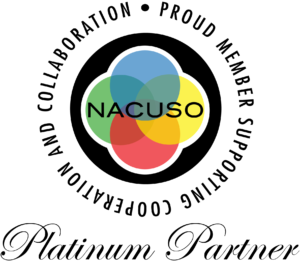Step by Step Procedures for Initiating Special Projects for Clients
Download this Information
Introduction
CU*Answers’ clients submit requests for special development work related to their CU*BASE membership data. Although these projects can take many different forms, we generally refer to them as either “custom programming” or “special jobs.” They might include one-time data updates (data floods), regular exchanges of data with a third-party vendor, implementation of custom fees, SSO (single sign-on) options, and development of new functionality or a unique new tool for their staff and members.
A Word About The CUSO Pricing Philosophy
Custom projects may have two fees: one to cover the cost of performing the necessary research to develop a project plan and design direction, and another to cover the actual development cost of programming, testing, and documenting the tools. Additional recurring fees will also be charged when appropriate.
As part of the evaluation of any request for custom development or third-party integrations, each project is looked at from a big-picture standpoint to evaluate how it fits with current and future corporate goals and direction. It is considered whether the CUSO will be investing its own funds to produce an end-product that will ultimately become a standard product offering to all network participants, or if it’s just a simple custom project to facilitate your credit union’s desire to do business with a certain vendor, post a special fee to your members, or implement a special new tool. Projects that aren’t appropriate as a CUSO-funded standard product are generally billed to clients on either an hourly or per-project basis according to either established pricing and prior similar projects.
CU*Answers looks forward to collaborating on solutions that will meet your credit union’s and your members’ needs and expectations.
Categories
To help explain the decision-making process which is required for these projects, following are the categories into which custom programming/special jobs fall for the purposes of this procedure:
| Type | Examples | |
|---|---|---|
| A | Basic Data Floods | Projects where existing data in your CU*BASE files needs to be adjusted in a batch according to some simple or pre-defined filters. Examples:
See “Other Projects” below for more complex data floods, or floods for which we have no existing programming in place. |
| B | Vendor Data Integrations | Transmitting CU*BASE data to a vendor or receiving data from a vendor and applying it to your CU*BASE files. Includes simple one-time projects as well as ongoing routine exchanges. (Also see “SSO Integrations” below.) Examples:
|
| C | Custom Fees | By far the largest area of custom development, this category involves projects to assess fees that cannot be handled by the features available in the standard CU*BASE Service Charge programs. Examples:
NOTE: An inventory of existing custom fee programs is available upon request, and we highly recommend you review it before submitting your new custom fee. You may be able to reduce your expense and project timelines if we can adapt an existing custom program for you. |
| D | SSO Integrations | Integrations that allow a member or employee to jump directly from online banking or CU*BASE to access separate websites and tools, without the need to independently authenticate (log in). Examples:
See the separate Best Practices document Single Sign On (SSO) Integrations with CU*Answers Tools for additional details on the evaluation process for projects of this type. |
| E | Other Projects | All other custom development that doesn’t fall into the categories described above. Examples:
|
Step by Step
Step 1: Contact Client Services to complete a Special Project Request/authorization form or place an order via the Developers Help Desk
There are two ways to initiate a special project request. You can contact any Client Service Representative or place an order on the DHD store. Both will result in a special project request/authorization form being created. This form gathers details necessary for us to begin the evaluation process. Provide as many details as possible; the more thoroughly we understand your request and all it will entail, the more quickly your project can move through the channels.
Step 2: Initial review of special project request/authorization forms
The project details are reviewed and if necessary a research and design bid will be created. This fee is intended to cover the cost of doing in-depth feasibility research and sketching out a design outline for how the project could proceed.
a) Research and design fee (if required)
Creation of research and design bid
CU*Answers prepares a research and design quote based on the amount of research required to develop the needed understanding of the project scope, and submits this quote to the Credit Union.
Approval of research and design bid
The Credit Union will need to sign and return the research and design bid prior to CU*Answers starting any research. This fee is applied to the total project cost at the time of completion. If for any reason the project is not completed and implemented, this fee is not refundable.
Research timeline
This will vary based on the project scope, integration with CU*BASE, third party requirements and other details. Depending on the project, the outcome of this step may be anything from a simple letter outlining our plans, to a formal Project Requirements document.
b) Quote for project fees
A bid request will be submitted to the Credit Union within 10-15 days of CU*Answers receiving the project (or completing research billed on a research and design bid). The bid lists both the dollar amount for the initial project and any additional costs incurred for recurring processes.
c) Approval of project fee bid
The Credit Union needs to sign and return the project fee bid and any additional required documents.
Step 3: Development
Includes infrastructure (files and business logic) as well as end-user interface development.
Step 4: Working with a 3rd-Party Vendor
If your project involves interactions with a 3rd-party vendor, remember that the timing of both the development as well as subsequent testing phases will largely be dependent on vendor timelines and resource availability. Some projects may also entail additional certification fees from the vendor, independent of CU*Answers project fees.
Step 5: Quality Testing
For projects involving changes to our core software tools, the CU*Answers Quality Control department tests the changes against specifications, in accordance with the CU*BASE Software Testing and Quality Control Procedures.
For projects that do not change our core software tools, a validation expert will complete testing which may include data/file verification, transmission and overall project processing.
Step 6: End-user documentation, if appropriate
Step 7: Beta-testing, if appropriate
Step 8: Implementation (“Go Live”)
This phase includes installing, configuring, and activating the new tools as well as other potential factors to be coordinated with your credit union, including time for CU staff training and/or notification of members if appropriate. Depending on the project, your project may need to be coordinated as part of a normal CU*BASE release for all clients, or implementation will be coordinated with your teams specifically for use by your credit union.
Related Materials
Following are related documents that may be relevant to your project request. All are available via www.cuanswers.com (view Best Practices).















